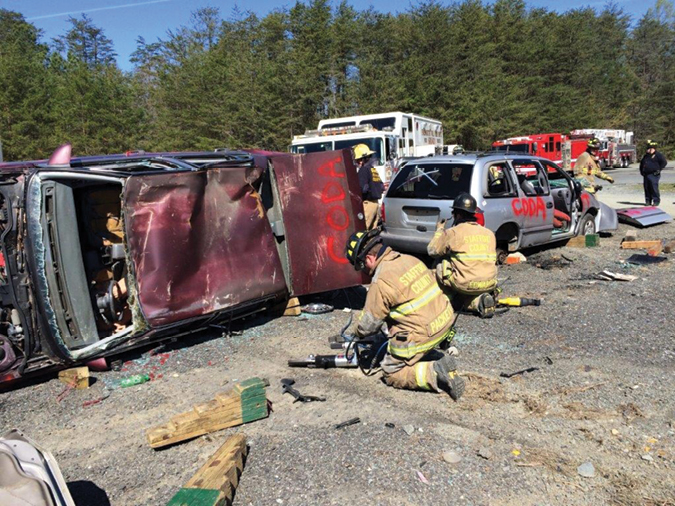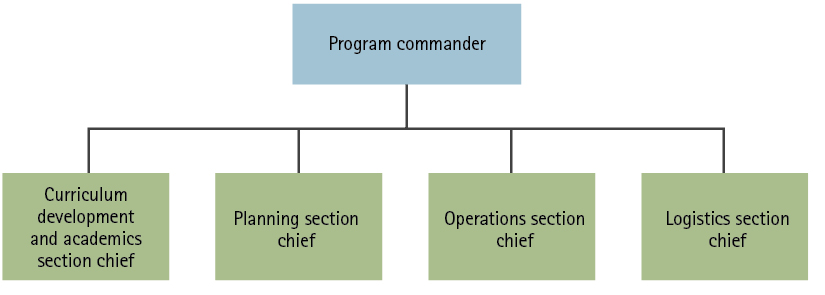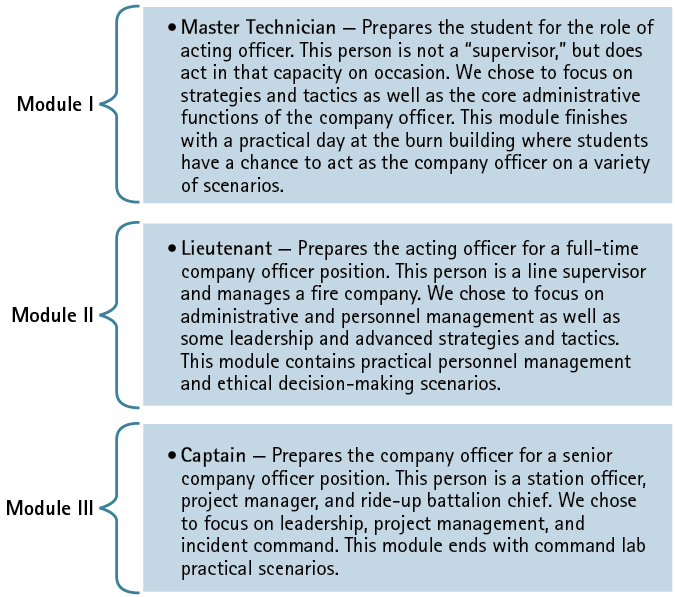By BART LACE
As the sheriff’s deputies were running toward the residence with AR-15s in hand, the Stafford County (VA) Fire & Rescue (SCFR) unit officer asked, “Dispatch, is there something I should know?” The unit officer had just been promoted and was working overtime during his first week as a company officer. It was his first experience running command and his second day riding the right front seat. “Command, it appears the resident set the fire and is in the detached garage with a rifle.”
An Unprepared Officer
Only a few hours into the shift, our “green” officer was dispatched to a residential fire, riding out on the second-due engine. The initial report from dispatch was for a single-family dwelling fire with persons trapped. The first engine arrived on scene, reported fire showing from side Alpha, and mounted an aggressive interior attack. The chief had an extended estimated time of arrival, so the officer of the second-arriving engine established command and began issuing orders to incoming units.

(1) The Stafford County (VA) Fire & Rescue Department’s Company Officer Development Academy students manage a multivehicle accident with entrapment during a practical training evolution as part of the class “CODA Module I Extrication.” (Photo by author.)
Within the first minute of his role as incident commander (IC), our newly promoted officer was made aware that the homeowner had set the fire and intended to do harm to first responders. Thankfully, there was a good outcome: No firefighters or civilians were injured, the subject was taken into custody by law enforcement, and the fire went out. How well had our IC’s training prepared him for running command under such stressful conditions?
He wasn’t prepared. Neither the department nor his mentor had taught him to run command under these stressful conditions. We failed him; we had no game plan for preparing new officers to be in charge. We (and he) were just winging it. We believed there was little chance that engine officers would have to serve as an IC, so we focused training in other areas we deemed more relevant such as strategies and tactics (also important). We had done very little incident command training with our officer candidates; with a little research, we found that this was the tip of the iceberg. We were failing to prepare our new officers for many of their responsibilities. A group of like-minded and progressive leaders within our organization set out to make a change in officer development training.
How We Got There
The SCFR is a young and fast-growing department. Our officer development challenge was a symptom of our youth and a lack of experienced officer candidates. We aren’t the only fire department experiencing these issues, but we chose to address them in the following ways.
First, we organized our ideas by putting them into documents, which included a mission statement and a motto. These documents gave us a place to come back to when we started to lose focus on certain objectives, objectives that helped us shape what would eventually become our Company Officer Development Academy (CODA).
Planning, developing curriculum, securing a budget, and establishing a timeline were paramount to our success. We also prioritized the creation of an organizational chart and designation of responsibilities similar to those in Figure 1.
Figure 1. Organizational Chart

Our CODA eventually created positions in the SCFR, including the following:
Program Commander: similar to a project manager, manages finance and budget and serves as a primary liaison to department leadership.
Curriculum Development and Academics Section Chief: develops curriculum, manages learning management systems (LMS), and recruits students.
Planning Section Chief: in charge of planning, rules and regulations, quality assurance, and timeline management.
Operations Section Chief: deals with the application process and classrooms, schedules daily staff members, and communicates with students.
Logistics Section Chief: in charge of procurement; secures venues and instructor housing.
It is important to note that assignments were made based on individual strengths, not rank or seniority. Members were plugged into positions based on their specific skill sets. We are in our third year of the program and are now rotating graduates into key staff positions. Our 2017 staff appointments are a great example; we have plugged many talented people in to where they fit best. Our curriculum and academics team has a staff member with a college education who is intuitive and very creative. His counterpart has a less formal education but has more field experience and is skilled and resourceful. Together, they bring balance to their section.
Our Format
During planning, we considered several models for our CODA ranging from a one- or two-week academy (that many of our regional partners use) to a series of short, independent weekend courses that could be completed over a period of months and would collectively meet our objectives. Neither model seemed quite right for our department, so we set out to create a course that met our specific needs.
We determined that no one course could effectively prepare candidates to operate at all company officer levels. For this reason, we divided our CODA into three modules that focused on objectives specific to the ranks of master technician, lieutenant, and captain. The format is shown in Figure 2.
Figure 2. Objectives Specific to Ranks

The curriculum development and academics team spent a great deal of time lining course objectives up by module and creating a calendar for each. Our CODA runs every other Wednesday for five to six dates per module. All three are conducted within a calendar year and run annually in succession. The length of each was determined by the curriculum we developed and has been updated to reflect feedback from students and instructors. The course schedule for Module I is below.
TABLE 1. CODA Module I |
||
|
Session 1 |
Introduction/Administrative Duties |
CODA Staff & SCFR Admin Staff |
|
Session 2 |
Fire Dynamics in Residential Building Fires |
Capt. Dave Barlow, Fairfax County FD |
|
Silverback Size-Up |
BC Rex Strickland, Fairfax |
|
|
Session 3 |
Tactical Ventilation |
DC Dan McMaster, Alexandria City FD |
|
Performance Under Pressure |
Tech Rob Blasetti, Fairfax County FD |
|
|
Session 4 |
Initial Command for the Company Officer |
DC Bart Lace, Stafford County FRD |
|
Meadowood Court Fire AAR |
BC Mike Kiger, Loudoun |
|
|
Session 5 |
Human Resources Policies |
Stafford County HR |
|
Ethical Decision Making for Public Safety |
DC Bart Lace, Stafford County FRD |
|
|
Workers’ Compensation |
Local Public Safety Attorney |
|
|
Session 6 |
Practical Evolutions |
Regional Company Officer Evaluators |
We recruit presenters internally and externally to find the best fit for each topic. Many of our instructors come from our regional partners, but we host others from across the country. We have found that most presenters will work to meet our specific needs and often will modify their presentations to be relevant to our organization and keep students engaged. Some presenters such as Seattle (WA) Fire Department Captain Mike Gagliano and National Fire Academy Instructor Howard Cross come from out of state to present leadership, decision making, and personnel management in Modules II and III.
Coursework
We knew that research and planning were important if we wanted to train high-performing, forward-thinking leaders. Module I requires a two- to three-page research paper, Module II requires a three- to five-page research paper, and Module III requires a group project. We impress on the students the importance of innovation and learning as they progress in their careers.
Since the inception of CODA, there have been several situations where our graduates have conducted research and developed processes that impacted our department significantly. One example involved the creation of a comprehensive professional development plan. The plan was to replace several outdated policies and update job descriptions/requirements. It also contains a component for college tuition and text reimbursement and establishes a transparent process for conducting and grading promotional assessments. This allows members at every level of our department to take part in making positive change and promotes organizational clarity.
Additionally, we identified discussion boards as a priority for our program. We pack a lot of material into an eight-hour class. Although discussion is encouraged during classes, many students are hearing this information for the first time and need additional time to digest it. Discussion boards give them time to think about what they’ve learned to engage in meaningful discussions with their classmates (peer-to-peer vs. instructor-to-student interaction). It yields a different outcome, develops trust among students, and encourages the creative thinking process.
We accomplished all coursework goals through the use of an LMS; it was the best way to make resources available, to have one platform for communicating, and to provide information. We posted reading materials, department policies and procedures, academy rules and regulations, slide decks, course schedules, and academic assignments to the LMS. Having one place for all student and instructor resources has been a key component of CODA’s success.
Choosing an LMS that met our needs and didn’t “break the bank” was difficult, but we eventually decided on Schoology©. First, the basic version was free on a trial basis, so there was no commitment prior to trying it. We’ve since budgeted for and upgraded to the enterprise version, which we’ve customized to meet our needs. We are also using Schoology in our fire academy with great success; we have recently begun using it for field training.
Bringing It Home: Post-Academy Reviews
The final part of the CODA process involved conducting reviews with students and staff members after each module to make sure we change as the curriculum, classroom environment, and students change. We continue to receive mostly positive feedback that supports our decision to continue the current program format, although changes were necessary. Students regularly comment that the format keeps them engaged, prepares them to conduct research, and gives them the opportunity to spend an adequate amount of time on relevant coursework.
CODA’s benefits began to show almost immediately in student reviews. Some real-world examples include the actions of a CODA student who was the engine officer on a garden apartment fire. He and his crew identified the better position of the second-arriving engine for fire attack, made assignment adjustments, and effected rescues from multiple balconies quickly. During the after-action review, he spoke about how CODA’s “Response to Garden Apartments” class prepared him for that call. Although I can’t write about details of personnel management examples, I have received feedback from other company officer CODA graduates who felt much more comfortable during response situations than they had previously.
The development of company officers will continue to be a priority for our organization. CODA works well for us and meets our needs. The most important thing you can do for your department is to recognize the need for officer development, make it a priority, and build a program that meets your needs. The success of the next generation of fire officers will depend on our commitment to preparing future fire service leaders.
BART LACE is a deputy chief with Stafford County (VA) Fire & Rescue.

